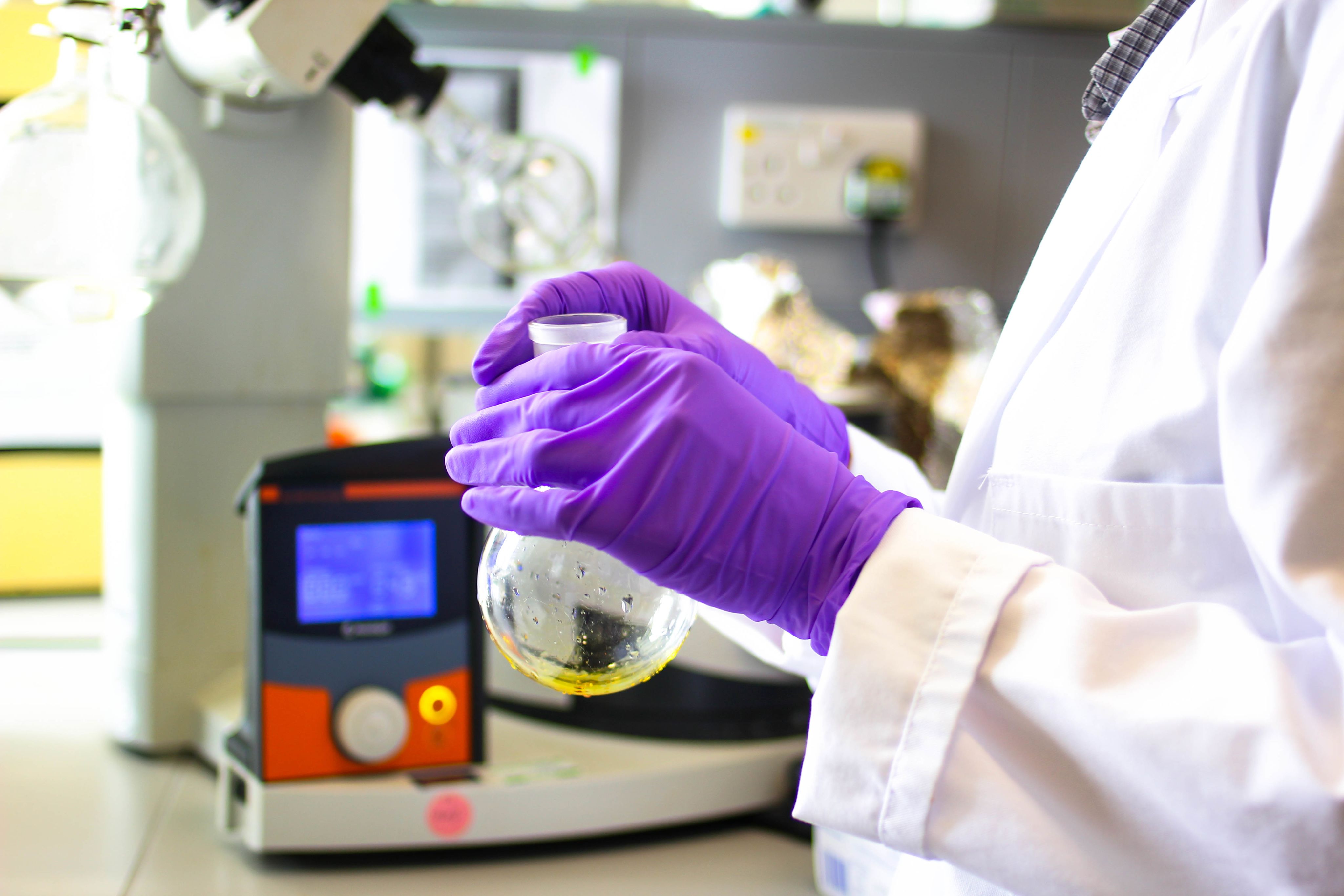Pollution solution with a pinch of clay
A new clay-based material developed at CEB could offer an affordable, low-waste way to tackle water pollution using only sunlight

A low-cost material made from clay – common in British soil – and vitamin B2 could one day help clean up pollution using only sunlight.
Developed by researchers in the Department of Chemical Engineering and Biotechnology (CEB), the new material – Flaponite – combines a clay base with compounds derived from vitamin B2, also known as riboflavin, to create a sustainable photocatalyst. It’s affordable, recyclable, and designed to work in water under visible light – offering a promising new approach to breaking down environmental pollutants without harsh chemicals or high energy use.
The study demonstrates how the material can break down model pollutants in lab conditions – a crucial first step in developing real-world water purification or green chemical processing technologies.
Professor Ljiljana Fruk (right). Credit: Martin Bond
Professor Ljiljana Fruk (right). Credit: Martin Bond
The research was led by Professor Ljiljana Fruk of CEB’s Bionano Engineering Group and conducted in collaboration with Prof Tijmen Euser’s group in the NanoPhotonics Centre, Cavendish Laboratory, Department of Physics. Co-first authors Matthew Ellis, a final-year PhD student in the EPSRC Sensor CDT, and Anna Melekhova, a postdoctoral researcher both from Fruk’s group, led much of the experimental work.
“Flaponite shows how combining natural molecules with everyday materials can lead to practical solutions for cleaner water and greener chemistry,” said Matthew.
Published in Catalysis Science & Technology, part of the Royal Society of Chemistry’s research portfolio, the study was selected to feature on the cover of the journal – a bold design created by Ellis, Fruk, and graphic designer David Bainbridge.
“Working on Flaponite has been exciting – it’s rewarding to see something simple like clay and vitamin B2 chemistry making a real environmental difference,” Anna added.
Unlike many traditional photocatalysts, which often rely on toxic or rare metals, Flaponite is built from biocompatible materials. The team demonstrated that it absorbs light and transfers energy efficiently to break down pollutants and transform chemicals in a water-based system. Plus, as a solid powder, it can be easily filtered out and reused, reducing waste.
“We’re excited about Flaponite because it employs affordable, biocompatible, easy to scale materials, and it gives new life to laponite, a clay that has been widely used in applications ranging from pharmaceuticals to cosmetic products,” said Professor Ljiljana Fruk. “Creating the artwork was great fun – art has a power to engage people with science in ways that words and data don’t always achieve.”
The team is now exploring how the system could be tailored for specific contaminants or reactions, with potential applications in environmental clean-up, green chemistry, and low-energy manufacturing.

